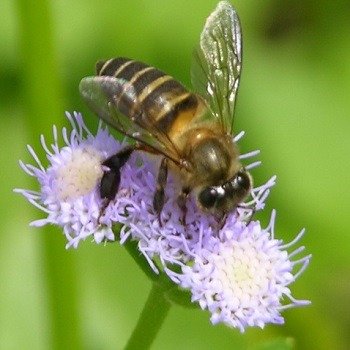About bees

Type of bee In India and about colony

Apis Cerana Indica

Apis Mellifera

Apis Dorsata
Apis dorsata are giant bees found all over India in sub-mountainous regions up to an altitude of 2700 m. They construct single comb in open about 6 feet long and 3 feet deep .They shift the place of the colony often. Rock bees are ferocious and difficult to rear. They produce about 36 Kg honey per comb per year. These bees are the largest among the bees described.

Bee Colony

Worker Bees

Queen Bee

Drone Bee
Drones are reared only when the colony is populous and there are plentiful sources of nectar and pollen. They usually live a few weeks, but they are driven from the hive to perish when fall or an extended period of adversity comes upon the colony. The only duty of the drone is to mate with the queen. The queen can lay drone (unfertilized) eggs in the drone cells. If she is not allowed to mate or if her supply of sperm is exhausted, she will lay unfertilized eggs in worker cells. The development of unfertilized eggs into adult drones is known as parthenogenesis.
Occasionally a colony may become queenless and unable to develop another queen. Then some of the worker bees begin to lay eggs, often several to a cell, and these develop into drones. A colony that has developed laying workers is difficult to requeen with a laying queen.
